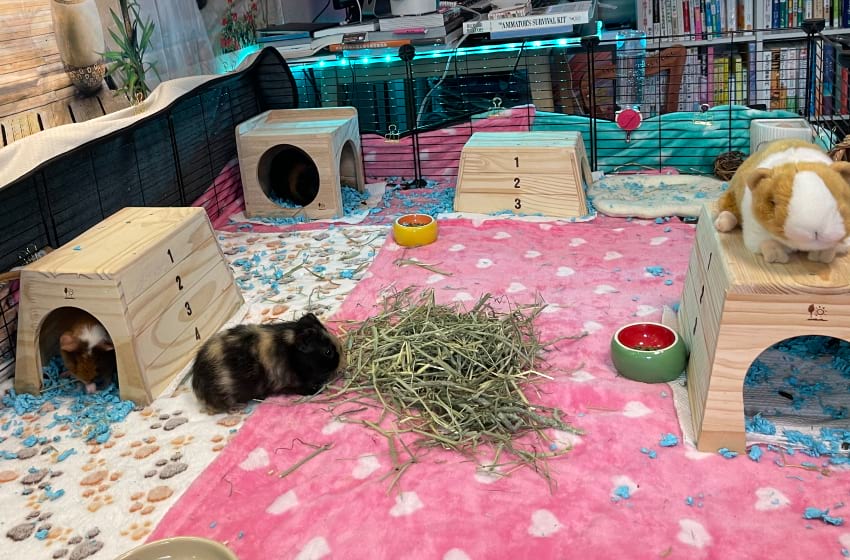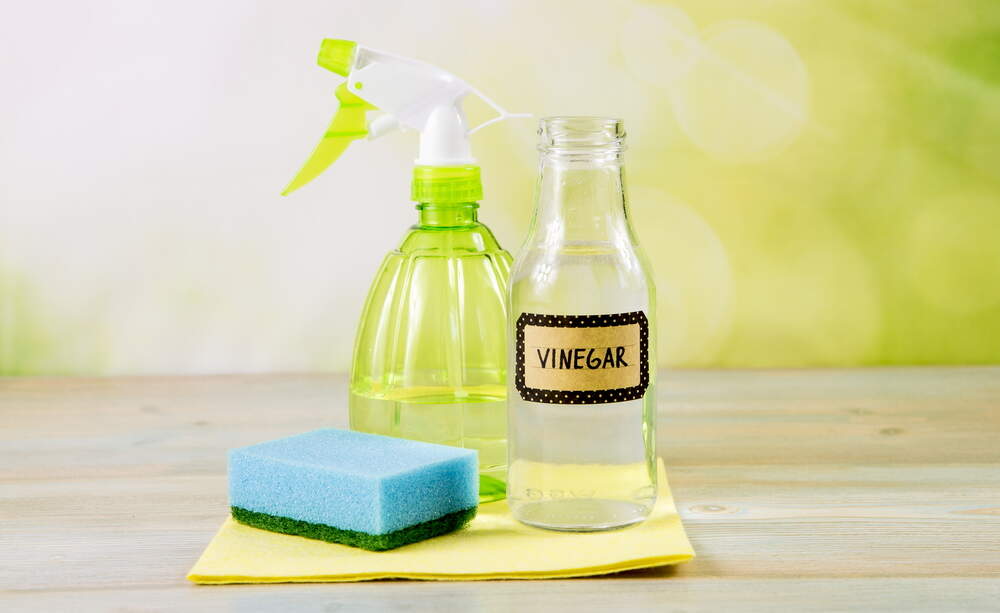How to Make Guinea Pigs More Eco-friendly Pets

It can be difficult to reduce our carbon footprint when we have pets. Luckily, guinea pigs have less impact than meat-eaters like cats or dogs–but they still produce a lot of waste! Let’s discuss how to make guinea pigs more eco-friendly pets.
The best way to make guinea pigs eco-friendly is to reduce the amount of things you buy for them. Buy reusable bedding like fleece liners, purchase white vinegar in bulk and mix it with water to make a simple homemade cleaning solution, and take care not to purchase more items than they need.
In this article, we’ll discuss more tips and tricks to stay eco-friendly while still providing top-notch care to your guinea pigs.
1. Purchase Reusable Bedding

If you’re currently using disposable bedding and can make the switch, I highly recommend purchasing fleece liners or bath mats and reusing them as many times as possible. They can make it through a lot of washes before they wear out!
Reusable bedding tends to be more expensive up-front, especially if you’re buying premade fleece liners. However, it’s much cheaper in the long term.
There are also ways to save money on reusable bedding, such as buying fleece from a thrift store and sewing your own liners or buying cheap chenille bath mats from stores like Target.
2. Don’t Buy More Than You Need
Sometimes we can shop a bit too much for our pets, buying things we don’t need or will only use once. If you want to be eco-friendly, the best way to do so is to reduce consumerism.
You can get by with two to three liners and other cage accessories if you wash them often. Select a color scheme so that everything matches nicely, and avoid seasonal items if you don’t want to use them year-round.
3. Use Natural Cleaning Products

The most common cleaning product for guinea pigs is a mix of water and white vinegar. This is a great cleaner that’s natural and better for the planet than many store-bought cleaners.
It’s also much better for your guinea pigs’ respiratory systems. Guinea pigs are prone to respiratory problems, and using scented cleaners can cause illness.
Vinegar can also be used in the wash to reduce smells. When it comes to laundry detergent, pick something scent-free and made for sensitive skin. Bonus points if it’s an eco-friendly or plastic-free brand!
4. Avoid Plastic Items
When plastic is thrown away, it doesn’t break down like wood or other natural materials. It sits in a landfill or in our oceans for up to 1,000 years!
Instead of plastic huts, try wooden hidey houses. Buy toys made of willow, grass hay, or even make your own out of cardboard. There are also some fun fleece toys such as snuffle mats that can be used again and again.
These items will also be safer for your guinea pigs. Most piggies chew their things, and it’s not good for them to eat plastic.
Just make sure any materials you choose are guinea pig safe. Avoid unsafe woods like cedar and anything treated with chemicals.
5. Reuse Household Items

You can also make your own toys using household items you’d otherwise throw away. Stuff a toilet paper, paper towel roll, or egg carton with hay, or enclose pellets inside to make a fun enrichment activity.
Use old towels to cover parts of the cage, giving your piggies a sense of safety and comfort. Your old shower liner can become a waterproof layer to go beneath fleece during floor time.
The possibilities are endless if you get creative with it! Of course, make sure everything is safe for your guinea pigs before using it.
6. Buy Second Hand
Many people give away their guinea pigs’ items for free or cheap after they pass away or are rehomed. You might be able to find C&C grids, water bottles, food bowls, and other items being given away in your neighborhood.
Look for items that can be cleaned and sanitized, as you don’t want to pass any illness on to your piggies.
This one can also save you a lot of money, depending on what you can find!
7. Buy Local Produce–Or Grow Your Own!

If you can buy local produce for your guinea pigs, this cuts down on emissions from shipping and supports local businesses.
You can also try your hand at growing your own vegetables. Lettuce, herbs, and grass are especially easy to grow and can even be potted indoors.
If you’re nervous about growing from seed, look for established plants at your local nursery.
8. Look for High-Quality Items
Buying high-quality items usually costs more upfront, but pays off in the long run since you won’t need to replace them as often. This is especially true the longer you keep guinea pigs, as many of the things you buy can be used throughout many piggy lifetimes!
9. Compost Your Guinea Pigs’ Waste
Guinea pig poop, hay, and some bedding types can be composted to reduce the trash that your piggies create. Next time you clean your guinea pigs’ cage, consider ditching the plastic garbage bag and instead dumping their waste and hay into your compost bin!
Alternatively, you can keep a compost pile in your yard or put it straight into the garden, and it’ll break down over time.
I hope this article has helped you with ideas for making your guinea pigs more eco-friendly and reducing their carbon footprint. Implementing just one of these can make a big impact!



